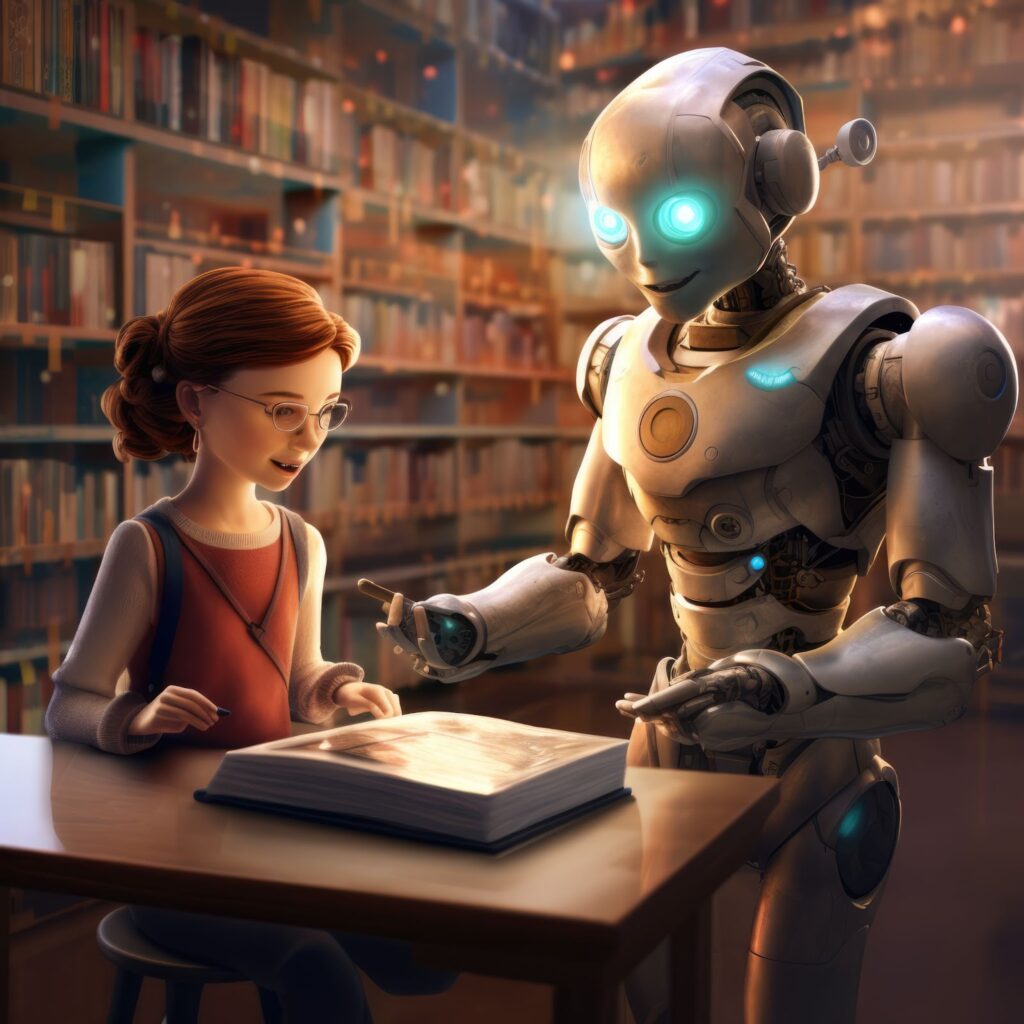The landscape of education is rapidly evolving, driven by the relentless pace of technological advancement. Traditional classrooms and learning methods are being supplemented, and in some cases, replaced by innovative tools that leverage the power of artificial intelligence (AI). These changes promise to deliver personalized learning experiences, tailored to the unique needs and pace of each student. Among the most exciting developments in this sphere is the use of generative AI, which holds immense potential to revolutionize how we learn and teach.
The Rise of Online Learning and AI Integration
Online learning has seen significant growth over the past decade, with platforms like Khan Academy, Coursera, and edX offering a plethora of courses accessible from anywhere in the world. This shift has democratized education, making high-quality learning resources available to a broader audience. However, the real game-changer is the integration of AI, particularly machine learning and generative AI, into these platforms.
Machine learning, a subset of AI, includes algorithms that learn from data and improve their performance over time. It has been instrumental in creating adaptive learning systems that personalize content based on individual student performance. Generative AI, on the other hand, takes this a step further by creating new content. While machine learning can predict and recommend, generative AI can generate new examples and scenarios, providing a richer and more engaging learning experience.
Understanding Machine Learning and Generative AI
Both machine learning and generative AI have transformative potential in education, but they operate differently. Machine learning models are trained on large datasets to identify patterns and make predictions. For instance, a machine learning algorithm might analyze a student’s performance and suggest areas for improvement. It can adapt the difficulty of questions based on the student’s proficiency, ensuring a personalized learning path.

Generative AI, however, can create entirely new content. It uses deep learning models, such as neural networks, to generate text, images, and even videos. An AI video generator, a prime example of generative AI, can produce educational videos tailored to specific learning objectives. This capability opens up new avenues for creating interactive and immersive learning materials that can cater to diverse learning styles.
Applications of Generative AI in Education
The applications of generative AI in education are vast and varied. Here are a few main areas where it is having a notable effect:
- Content Creation: Generative AI can automate the creation of educational content, including textbooks, quizzes, and multimedia presentations. For example, it can generate customized problem sets for math students or create engaging science simulations. This reduces the workload on educators and ensures that students receive up-to-date and relevant materials.
- Personalized Learning: With generative AI, educators can design personalized learning experiences that cater to the individual needs of students. By analyzing student data, generative AI can create customized lesson plans and study guides. This approach helps address the diverse learning paces and styles found in any classroom, ensuring that no student is left behind.
- Interactive Simulations and Virtual Labs: Generative AI can create realistic simulations and virtual labs that provide hands-on learning experiences. Chemistry students can perform experiments in a virtual lab, and biology students can investigate virtual ecosystems. These simulations enhance understanding and retention of complex concepts.
- Language Learning: Exercises for learning a language that adjusts to the skill level of the learner can be produced by generative AI. It can create dialogues, vocabulary exercises, and comprehension tests tailored to the individual’s progress. This guarantees a more effective and engaging language learning experience.
- Assessment and Feedback: Generative AI can create assessments that provide instant feedback to students. This enables students to comprehend their errors and gain knowledge from them immediately. Additionally, AI-generated feedback can be more detailed and specific, helping students grasp complex concepts better.
Advancements and Future Prospects
The potential of generative AI in education is only beginning to be realized. Research on artificial intelligence is still pushing the envelope of what is feasible. As AI models become more sophisticated, their ability to create high-quality, contextually relevant educational content will improve.

One promising development is the use of AI to create personalized learning environments that adapt in real time. These environments can monitor a student’s engagement and adjust the content delivery accordingly. For example, if a student is harrowing with a particular topic, the AI can produce and supply additional resources and support, ensuring a thorough understanding before moving on.
Moreover, the integration of generative AI with other emerging technologies, such as augmented reality (AR) and virtual reality (VR), holds exciting prospects and likelihood. Imagine a history lesson where students can virtually explore ancient civilizations or a physics class where they can experiment with virtual particle accelerators. Immersion experiences have the potential to increase the impact and engagement of learning.
Ethical Considerations and Challenges
While the benefits of generative AI in education are compelling, there are also ethical considerations and challenges that need to be addressed. Ensuring data privacy and security is paramount, as educational systems collect and analyze vast amounts of personal information. It is crucial to implement robust data protection measures to safeguard student privacy.
Additionally, there is the challenge of ensuring that AI-generated content is accurate and unbiased. Educators and AI developers must work together to validate and curate AI-generated materials, ensuring they meet educational standards and promote inclusive learning.
Conclusion
Generative AI is poised to transform the future of education by creating personalized, engaging, and effective learning experiences. From content creation to personalized learning and interactive simulations, the applications of generative AI are vast and varied. By harnessing the power of technologies like AI video generators, educators can provide high-quality education tailored to the needs of each student. As we continue to explore and refine these technologies, the future of education looks promising, with generative AI at the forefront of this transformation.

